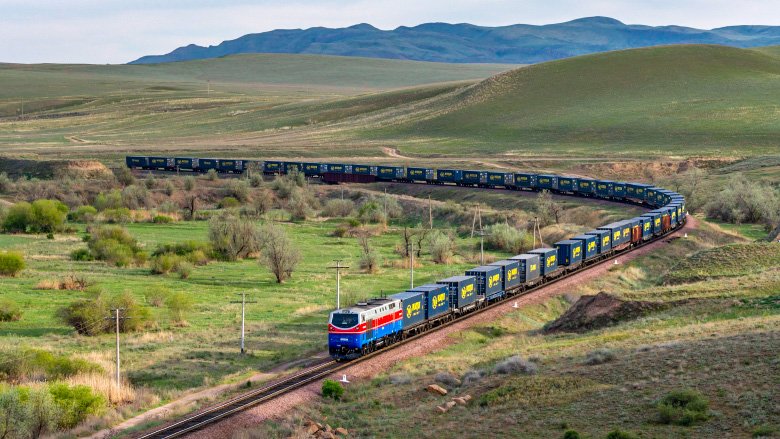The Middle Corridor—a network of road, rail, and sea routes linking Chinese and European markets via Central Asia and the Caucasus—can become an engine of growth. Improvements to strengthen the corridor will help economies to flourish by boosting trade, creating jobs, and spurring entrepreneurship. A combination of investments and efficiency measures can reduce travel times along the corridor by half and triple trade flows by 2030.
Investment is needed to modernize railways and intermodal and maritime facilities, while improved coordination, logistics, and digitalization can unlock efficiency gains. The World Bank is partnering with governments and multilateral organizations to realize the corridor’s potential to catalyze trade and economic growth in the region. The Bank has identified 10 critical actions that can address the most pressing short-term bottlenecks.
- Create a railway bypass to reduce congestion in the Almaty metro area. In Almaty, the largest city in Kazakhstan, all freight trains pass through the city centre and must have their locomotives changed from diesel to electric. An urban bypass could improve the flow of this rail traffic.
- The Kazakhstan-Uzbekistan border crossing has long wait times. Some companies instead send freight on long, indirect routes that have diversions due to capacity limitations. The creation of a new railway connection between Uzbekistan and Kazakhstan will allow cargo owners to take advantage of direct routes.
- The level of the Caspian Sea is dropping due to climate change, affecting port operations. The Port of Aktau needs fit-for-purpose equipment and increased berth capacity to improve its operational efficiency. For example, slow ship-to-shore handling can be addressed by deploying the most efficient cranes for each cargo type and by acquiring rail-mounted equipment.
- A lack of rolling stock, particularly of locomotives in Georgia, limits the Middle Corridor’s potential as a transit route for freight, resulting in long delivery times. Increasing the amount of rolling stock will improve the Corridor’s capacity and efficiency.
- Enhance the Akhalkalaki-Türkiye border rail connection and expand Akhalkalaki rail station. As Akhalkalaki station is a point of gauge change, it could become a bottleneck when a new line is constructed from it to Sivas in Türkiye. By making the rail line at the Akhalkalaki-Türkiye border dual gauge, the change of gauge could take place in Georgia or Türkiye, thus expanding operational flexibility. The reconfiguration of trains at Akhalkalaki station could be expedited by developing a multimodal container terminal or marshalling yard.
- Georgia’s Poti Port reached capacity in 2023. Expanding Poti’s maritime handling capacity and improving its hinterland rail connectivity will enable the port to accommodate more container vehicles and reduce container transit times.
- The Sivas-Kars-Georgia border railway line needs to be modernized as soon as possible. It is the most urgent railway infrastructure bottleneck in the Middle Corridor, due to its limited cargo-carrying capacity and technical obsolescence.
- The development of a higher-capacity, above-ground railway link across the Bosphorus Strait, via Istanbul’s Third Bridge, is likely to prevent Istanbul from becoming a bottleneck that would reduce the competitiveness of the Middle Corridor’s Türkiye branch.
- Investments are needed to improve port and rail connectivity in Romania and Bulgaria. This could help strengthen internal and cross-border connectivity in the two countries, particularly to and from Central Europe.
- Across the Middle Corridor, it is important to improve trade facilitation, border management, and service delivery. Currently, customs and border management are not adequately digitalized, limiting effective information exchange. There is also no track record of coordinated, scheduled, and time-definite services.
